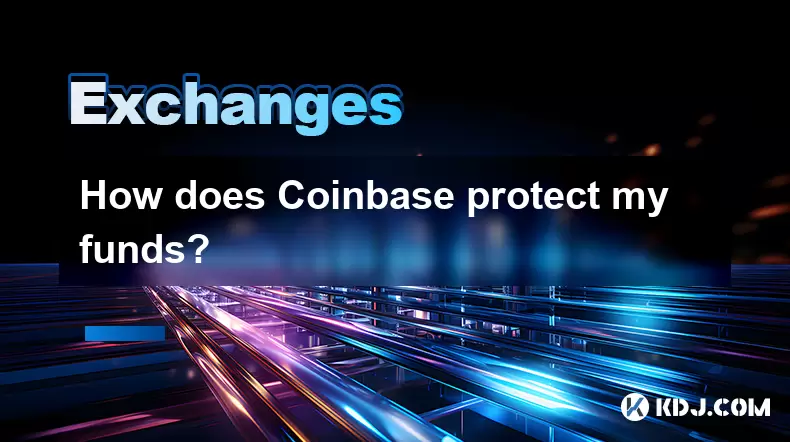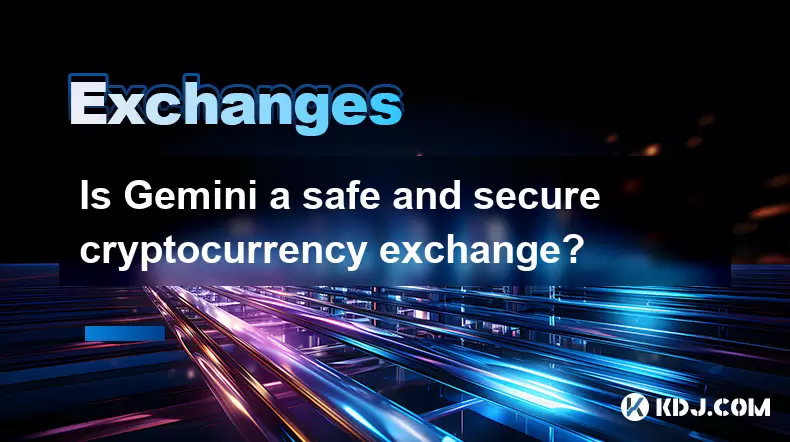-
 Bitcoin
Bitcoin $114000
0.76% -
 Ethereum
Ethereum $3488
0.53% -
 XRP
XRP $2.908
2.27% -
 Tether USDt
Tether USDt $1.000
0.05% -
 BNB
BNB $750.3
0.39% -
 Solana
Solana $161.9
0.14% -
 USDC
USDC $1.000
0.03% -
 TRON
TRON $0.3258
1.22% -
 Dogecoin
Dogecoin $0.1991
1.38% -
 Cardano
Cardano $0.7260
3.39% -
 Hyperliquid
Hyperliquid $38.20
2.33% -
 Stellar
Stellar $0.3987
7.33% -
 Sui
Sui $3.414
1.17% -
 Chainlink
Chainlink $16.28
2.52% -
 Bitcoin Cash
Bitcoin Cash $542.2
2.07% -
 Hedera
Hedera $0.2489
7.51% -
 Ethena USDe
Ethena USDe $1.001
0.05% -
 Avalanche
Avalanche $21.40
0.70% -
 Toncoin
Toncoin $3.635
0.75% -
 Litecoin
Litecoin $109.8
2.04% -
 UNUS SED LEO
UNUS SED LEO $8.955
-0.02% -
 Shiba Inu
Shiba Inu $0.00001221
2.44% -
 Uniswap
Uniswap $9.152
2.20% -
 Polkadot
Polkadot $3.588
2.09% -
 Monero
Monero $298.1
1.27% -
 Dai
Dai $1.000
0.01% -
 Bitget Token
Bitget Token $4.326
1.28% -
 Pepe
Pepe $0.00001045
1.96% -
 Cronos
Cronos $0.1330
4.27% -
 Aave
Aave $257.9
2.12%
How does Coinbase protect my funds?
Coinbase secures user funds with cold storage, multi-signature wallets, 24/7 monitoring, and crime insurance, while requiring 2FA and offering withdrawal whitelisting for added protection.
Aug 03, 2025 at 05:49 pm

Understanding Coinbase’s Security Infrastructure
Coinbase employs a multi-layered approach to protect user funds, combining advanced technology, strict protocols, and regulatory compliance. The platform stores the vast majority of customer funds in cold storage, meaning they are kept offline and disconnected from the internet. This significantly reduces the risk of hacking attempts, as cybercriminals cannot access offline systems through remote attacks. Cold storage wallets are geographically distributed and secured with military-grade encryption, making physical access extremely difficult and tightly monitored.
Coinbase also implements multi-signature technology for its wallets. This means that more than one cryptographic key is required to authorize a transaction. These keys are stored separately, often in different secure locations, ensuring that no single point of failure can compromise the entire system. Even if one key were to be compromised, the funds would remain protected due to the requirement of additional signatures.
Insurance and Financial Safeguards
One of the most reassuring features of Coinbase is its comprehensive insurance policy for digital assets. The platform maintains crime insurance that protects digital currency held in its online storage systems. This insurance covers losses from theft, hacking, and unauthorized access. It’s important to note that this insurance applies specifically to assets held on the platform and not to funds that users have transferred to external wallets.
The insurance coverage is managed through third-party underwriters and is regularly reviewed to ensure it reflects the current value of assets stored. This protection extends to both cryptocurrencies and fiat currencies held in user accounts, reinforcing Coinbase’s commitment to financial security. Users should understand that while insurance provides a safety net, it does not eliminate the need for personal security practices.
Two-Factor Authentication (2FA) and Account Protection
Coinbase mandates Two-Factor Authentication (2FA) as a critical layer of defense for user accounts. When enabled, 2FA requires users to verify their identity using two methods: something they know (like a password) and something they have (such as a mobile device). Users can set up 2FA via authenticator apps like Google Authenticator or Authy, which generate time-sensitive codes.
To enable 2FA:
- Log into your Coinbase account
- Navigate to Settings > Security
- Select Two-Factor Authentication
- Choose your preferred method (authenticator app recommended)
- Scan the QR code with your app and enter the generated code
- Confirm and save the settings
It is strongly advised to avoid SMS-based 2FA due to the risk of SIM-swapping attacks. Using an authenticator app provides a more secure and reliable verification process.
Monitoring and Real-Time Threat Detection
Coinbase runs a 24/7 security monitoring system that uses behavioral analytics and machine learning to detect suspicious activity. Unusual login attempts, rapid withdrawals, or changes in account details trigger immediate alerts and may result in temporary account restrictions. This system continuously analyzes patterns such as login locations, device fingerprints, and transaction frequencies.
When anomalous behavior is detected:
- The user receives an instant notification via email and SMS
- The transaction or login attempt is paused
- Additional verification steps are required
- Support teams may initiate contact to confirm identity
This proactive monitoring helps prevent unauthorized access before damage occurs. Users are encouraged to keep their contact information updated so that alerts reach them promptly.
Secure Withdrawals and Transaction Controls
To prevent unauthorized fund transfers, Coinbase enforces withdrawal address whitelisting. This feature allows users to pre-approve specific cryptocurrency addresses for withdrawals. Once an address is added, it cannot be used immediately; a waiting period (typically 48 hours) is enforced to allow time for users to detect and cancel fraudulent additions.
To set up a whitelisted address:
- Go to Settings > Security > Address Whitelist
- Click Add Address
- Enter the destination wallet address and label it
- Confirm via 2FA
- Wait for the cooling-off period to complete
During this period, the address is pending and cannot be used for withdrawals. This delay acts as a buffer against account takeovers. Additionally, large withdrawals may require additional identity verification or manual review by Coinbase’s security team.
Regulatory Compliance and Audits
Coinbase operates under strict regulatory frameworks in the jurisdictions where it is licensed. It complies with Anti-Money Laundering (AML) and Know Your Customer (KYC) regulations, requiring users to verify their identity during onboarding. This not only helps prevent illicit activities but also strengthens the platform’s ability to recover accounts in case of compromise.
Regular third-party audits assess Coinbase’s financial statements, security protocols, and operational resilience. These audits verify that customer funds are properly accounted for and that security measures meet industry standards. Publicly traded financial disclosures further enhance transparency, allowing users to trust that their assets are managed responsibly.
Frequently Asked Questions
Is my cryptocurrency insured if Coinbase gets hacked?
Yes, digital assets held in Coinbase’s online systems are covered by crime insurance. This includes protection against theft from cyberattacks. However, insurance does not cover losses due to user error, such as sending funds to the wrong address.
What happens if I lose access to my 2FA device?
Coinbase provides recovery options, including backup codes and account recovery forms. It is crucial to store backup codes securely during 2FA setup. Without them, regaining access may require extensive identity verification.
Can someone withdraw my funds if they have my email and password?
Not easily. Even with your email and password, an attacker would need access to your 2FA method. If 2FA is properly configured, unauthorized access is highly unlikely. Immediate action, such as changing your password and contacting support, can further mitigate risks.
Does Coinbase monitor every transaction I make?
Coinbase monitors transactions for suspicious patterns, especially those involving large amounts or unfamiliar destinations. Routine transactions between trusted addresses are not flagged, but any deviation from normal behavior may trigger a security review.
Disclaimer:info@kdj.com
The information provided is not trading advice. kdj.com does not assume any responsibility for any investments made based on the information provided in this article. Cryptocurrencies are highly volatile and it is highly recommended that you invest with caution after thorough research!
If you believe that the content used on this website infringes your copyright, please contact us immediately (info@kdj.com) and we will delete it promptly.
- XRP: Crypto Analyst's Smartest Buy in 2025?
- 2025-08-04 00:30:13
- SEC, Crypto Regulation, and Digital Assets: A New Era?
- 2025-08-04 00:30:13
- Navigating the Meme Coin Mania: Cold Wallets, SHIB, and DOGE in 2025
- 2025-08-03 22:30:16
- Bitcoin's Price Fall and Scrutiny: What's a New Yorker to Think?
- 2025-08-03 22:30:16
- Shiba Inu's Resistance and Recovery Push: What's Next for SHIB?
- 2025-08-03 22:50:16
- Bitcoin, Hashcash, and Crypto Innovation: A Look at the Foundation and Future
- 2025-08-03 23:12:53
Related knowledge

How to set and manage alerts on the Gemini app?
Aug 03,2025 at 11:00am
Understanding the Gemini App Alert SystemThe Gemini app offers users a powerful way to stay informed about their cryptocurrency holdings, price moveme...

What are the websocket feeds available from the Gemini API?
Aug 03,2025 at 07:43pm
Overview of Gemini WebSocket FeedsThe Gemini API provides real-time market data through its WebSocket feeds, enabling developers and traders to receiv...

How to manage your portfolio on Gemini?
Aug 03,2025 at 10:36am
Accessing Your Gemini Portfolio DashboardTo begin managing your portfolio on Gemini, you must first log in to your account through the official websit...

How to understand the Gemini order book?
Aug 02,2025 at 03:35pm
What Is the Gemini Order Book?The Gemini order book is a real-time ledger that displays all open buy and sell orders for a specific cryptocurrency tra...

Is Gemini a safe and secure cryptocurrency exchange?
Aug 02,2025 at 10:42pm
Understanding Gemini’s Regulatory ComplianceGemini is a New York State-chartered trust company, which places it under the supervision of the New York ...

How to download your Gemini transaction history for taxes?
Aug 03,2025 at 09:15am
Understanding Gemini Transaction History for Tax PurposesWhen preparing your cryptocurrency tax filings, having a complete and accurate record of all ...

How to set and manage alerts on the Gemini app?
Aug 03,2025 at 11:00am
Understanding the Gemini App Alert SystemThe Gemini app offers users a powerful way to stay informed about their cryptocurrency holdings, price moveme...

What are the websocket feeds available from the Gemini API?
Aug 03,2025 at 07:43pm
Overview of Gemini WebSocket FeedsThe Gemini API provides real-time market data through its WebSocket feeds, enabling developers and traders to receiv...

How to manage your portfolio on Gemini?
Aug 03,2025 at 10:36am
Accessing Your Gemini Portfolio DashboardTo begin managing your portfolio on Gemini, you must first log in to your account through the official websit...

How to understand the Gemini order book?
Aug 02,2025 at 03:35pm
What Is the Gemini Order Book?The Gemini order book is a real-time ledger that displays all open buy and sell orders for a specific cryptocurrency tra...

Is Gemini a safe and secure cryptocurrency exchange?
Aug 02,2025 at 10:42pm
Understanding Gemini’s Regulatory ComplianceGemini is a New York State-chartered trust company, which places it under the supervision of the New York ...

How to download your Gemini transaction history for taxes?
Aug 03,2025 at 09:15am
Understanding Gemini Transaction History for Tax PurposesWhen preparing your cryptocurrency tax filings, having a complete and accurate record of all ...
See all articles

























































































